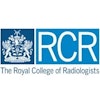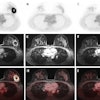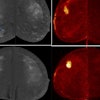
NEW YORK (Reuters Health) - There is no good evidence to support the use of high-intensity focused ultrasound (HIFU) in prostate cancer, although the treatment was developed nearly two decades ago.
That's the conclusion of a new systematic review published online September 15 in European Urology.
"Our research suggests that the available data concerning efficacy and safety of HIFU is insufficient to recommend the routine use of HIFU for the treatment of prostate cancer," said Dr. Marisa Warmuth, of the Ludwig Boltzmann Institute for Health Technology Assessment in Vienna, Austria.
The HIFU probe is introduced transrectally and works by heating up the tissue to induce coagulation necrosis. It has been approved in certain European countries to treat prostate cancer, but hasn't received US Food and Drug Administration approval.
Dr. Warmuth said the new analysis had been carried out on behalf of the Austrian Ministry of Health to see if there was support for the country's decision not to reimburse treatment.
Of the 20 prospective studies with at least 50 participants identified by Dr. Warmuth and colleagues, all were uncontrolled and rated as very low quality.
"To our knowledge HIFU has not been compared to any other invasive treatment options," she told Reuters Health in an e-mail. "In addition, long-term follow-up data for HIFU is still missing. And a standard definition for biochemical treatment failure following HIFU remains to be established."
The studies included a total of 3,018 patients, 93% of whom had HIFU for primary therapy. Rates of adverse events ranged from 1% to 58% for urinary tract problems, 0% to 15% for rectal problems, 1% to 77% for impotence, and 1% to 6% for pain.
In various case series, biochemical disease-free survival ranged between 78% and 84% at one year, 0% and 91% at two years, and 69% at seven years. The one study that reported overall survival and prostate cancer-specific survival rates found 90% and 100% at five years, respectively, and 83% and 98% at eight years.
The authors note that there was little change in quality of life scores before and after treatment.
Dr. Peter T. Scardino, who heads the prostate cancer program at the Memorial Sloan-Kettering Cancer Center in New York City, said there was definitely room for a new treatment option for prostate cancer.
Surgery is very effective, but it's tied to bleeding and erectile complications. Radiotherapy has fewer complications but is less effective.
"The quality of the data to evaluate (whether) HIFU would fill that gap is questionable," Dr. Scardino told Reuters Health.
"What I'd like to see is better, more carefully done studies that really define the right kind of patient that can be treated with HIFU," he added. "I don't think we understand the risk-reward equation with HIFU."
By Frederik Joelving
Source: http://link.reuters.com/vur72q
Eur Urol 2010.
Last Updated: 2010-10-28 19:56:05 -0400 (Reuters Health)
Related Reading
High-intensity focused ultrasound effective for localized prostate cancer, July 21, 2010
High-intensity focused ultrasound effective against high-risk prostate cancer, January 16, 2007
High-intensity focused ultrasound safe as first-line treatment for prostate cancer, April 10, 2006
Copyright © 2010 Reuters Limited. All rights reserved. Republication or redistribution of Reuters content, including by framing or similar means, is expressly prohibited without the prior written consent of Reuters. Reuters shall not be liable for any errors or delays in the content, or for any actions taken in reliance thereon. Reuters and the Reuters sphere logo are registered trademarks and trademarks of the Reuters group of companies around the world.


















